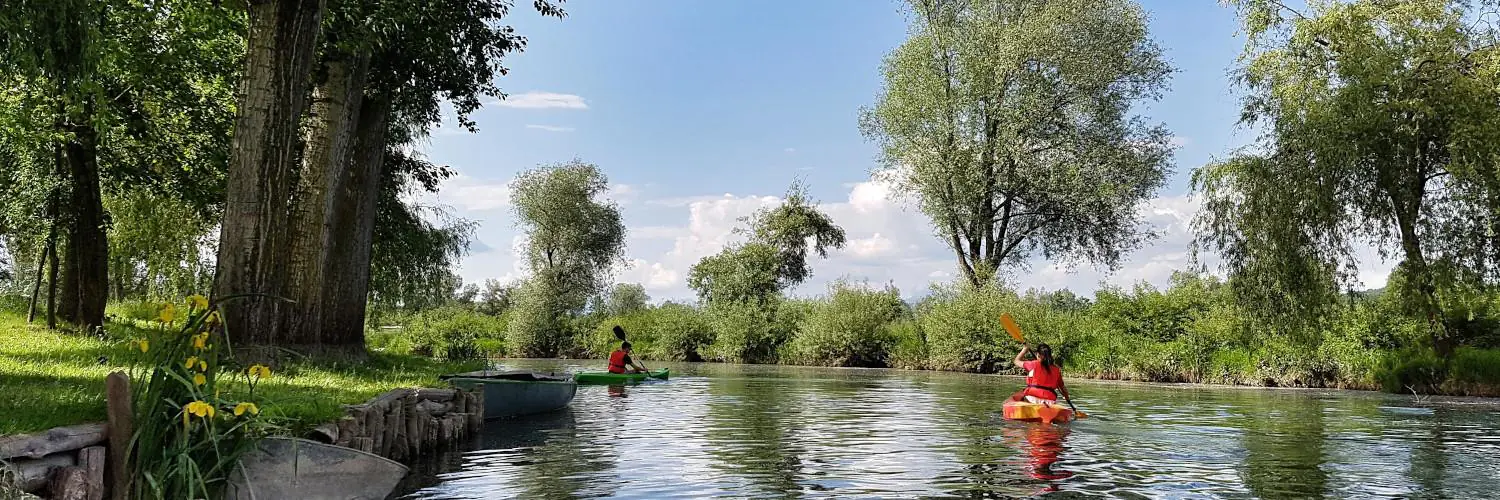Ranging from casual recreational watercrafts, sleek racers, to bomb-proof whitewater and other recreational boats, the options for the types of materials and hi-tech proprietary processes used to build a particular model of kayak are widespread among manufacturers. This naturally brings up the question: what is the best kayak material?
Table of Contents
Best Kayak Construction
Kayak building processes can be broken down by the different types of construction materials used to form the boat, either in its entirety, or by creating a deck and a hull and joining the two pieces together using materials such as wood, composite glass (fiber, aramid, graphite), rotomold, thermoform, and others . Also, the pros and cons of each of these materials should be considered carefully. This process alone requires you to determine what kind of use, and abuse, you can expect your kayak to handle. That, in turn, will weigh critically upon which material will perform best within your chosen kayak activity.
Wooden Kayaks
Wooden deck and hulled boats are typically covered in fiberglass, resin and varnish to protect the wood layer making them as durable as most synthetic composite construction and are at the lighter end of the weight scale among other boat fabrication materials. Strip built boats are a thing of beauty. This process allows for a nearly endless array of design options, too. Fiberglass and varnish finish makes a wooden kayak as strong as a composite boat at a much lower cost and perhaps 25% or more lighter than their all fiberglass counterparts. Some consider wooden kayaks to have strength comparable to Kevlar graphite composites.
Composite Glass Construction Kayaks
Since construction techniques are basically the same, boats made of what we commonly know as “fiberglass”, made of aramid fabric and graphite fibers, are all variations of synthetic fabric construction. Built by layering these fabrics either upon themselves or blended with others, they are then applied to a mold. Fiberglass boat molds include an outer layer of colored gel-coating that will form the surface layer of the finished kayak. Foams panels and/or gauze are sometimes added for reinforcement in the deck and hull. The entire series of layers in the mold are vacuum bagged and allowed to cure to form either a deck or hull section separately. Those two ‘halves’ are then joined together to form the complete kayak.
Rotomolded Kayaks
Plastic (polyethylene) powder is poured into a mold, heated and rotated to form a complete, one-piece kayak. Boats are made mostly out of a linear-based molecular structure while others are made from cross-linked poly molecules. These are the least expensive but the heaviest boats among your options. The quality of the plastic used in their construction will affect the weight somewhat, and also the price. Expect the big hogs sold at discount houses to be beasts when it comes to weight as well as trying to wrestle them through the water. Rotomolds aren’t as fine-lined as other options, but some are nearly comparable in performance; they will weigh more, while costing significantly less.
Thermoform Kayaks
A sheet of ABS (like a plastic alloy with styrene) with a top layer of acrylic is heated and then drawn down onto a mold (as opposed to forming inside the mold as are powered/pellet plastics) to create both the hull and deck in separate operations that are then joined together in a process similar to fiber composite boats.
Inflatable or Folding Kayaks
Briefly, inflatables are just that – kayak-socks made from strong poly-based fabric to provide shape and rigidity throughout the boat. Make boats stronger by using the drop-stitch method. It makes the boat hold air better and tougher. This method keeps the boat’s body strong and durable. Folding boats are typically canvas or nylon skins stretched over wood or aluminum frames. New stuff helps creators make strong folding boats using panels and fold shapes.
What do you think is the best material to use for a kayak?








